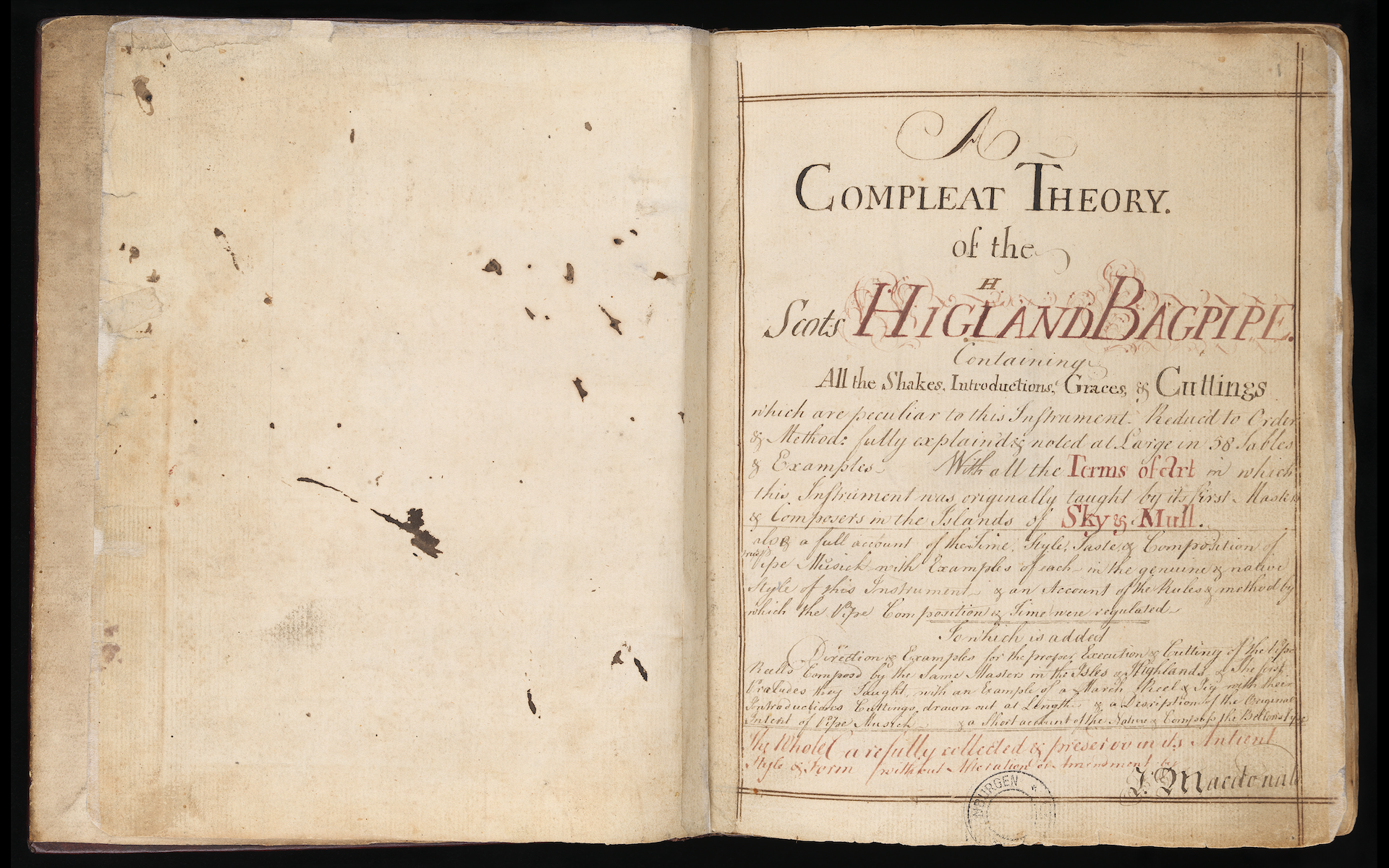There are four key areas where the pre-1841 manuscripts, books and scores reflect sometimes subtle, sometimes profound differences when compared to modern typeset arrangements and competition performances.
- Cadences: different styles (held, trickling, streaming), different lengths (from one to 5 notes), different notes (start on high-A, on high-G; to F, to E, etc.; starting on high-G from a high-A theme note)
- Genres: implications regarding tempo, particularly as a result of express indicators in the early material (“lively”, “somewhat lively”, “very slow”, “slow”)
- Urlar Returns: “as a chorus of a song is to the verses, so is the ground of a piobaireachd to its variations…”
- Movements/Motifs: half-grips; half-grip taoluaths and crunluaths; “redundant-A” taorluaths and crunluaths with full grips; half D-throws; crahinin (echo, double-beat)
We have explored these areas in some depth at LLP. We have also discussed the desire for different settings to be performed at recitals and allowed for at competitions. And it seems, at least among the Club members and those judges and competitors we have interviewed, that this desire is broadly supported.
Here, I am going to propose something a bit more radical. The desire is to solicit feedback from the community. The intent of the proposals is to open up possibilities for enlivened and enlivening performances by allowing the performer the chance to introduce her or his own unique creativity to the tune.
Proposal One: Cadences
All cadences in any setting are optional elements, according to the discretion of the performer. Consistency of style is not important, thus allowing the performer access to the full pallet of interpretive effects.
Proposal Two: Crahinins
All crahinins in any setting may be played in any style of the performer’s choosing. Instead of an echo beat, the performer may choose to play a double-beat, and vice versa, according to the interpretive intent and expression desired. Consistency in style selection is not important, thus allowing the performer access to the full pallet of interpretive effects.
All birls (hiharins) are also covered by this proposal, since they were originally crahinins.
Proposal Three: Urlar Refrains
The performer may choose to introduce urlar refrains after any doubling motion (urlar, suihal, dithis, lemluath, toarluath, etc.) of a tune.
The performer may choose not to introduce an urlar refrain at the end of the final motion.
Proposal Four: Taorluaths and Crunluaths
Fosgailthe crunluaths may be played open, at the discretion of the piper.
Redundant A movements are allowable in any setting.
Where manuscripts are unclear, either triplet (fosgailthe) or dot-cut (gearr) style taorluaths are allowed, at the discretion of the piper.
Proposal Five: Intent
The performer must be prepared to defend or explain their interpretive choices when asked to do so. This holds the performer accountable for the performance, necessitating thoughtful interpretive choices be made.
As stated above, the presentation of these proposals is intended to begin a discussion among members. Eventually, some year or decade from now, I would like to present the results of the discussion to Judging and Music boards for their consideration.
But for now: let’s talk!

